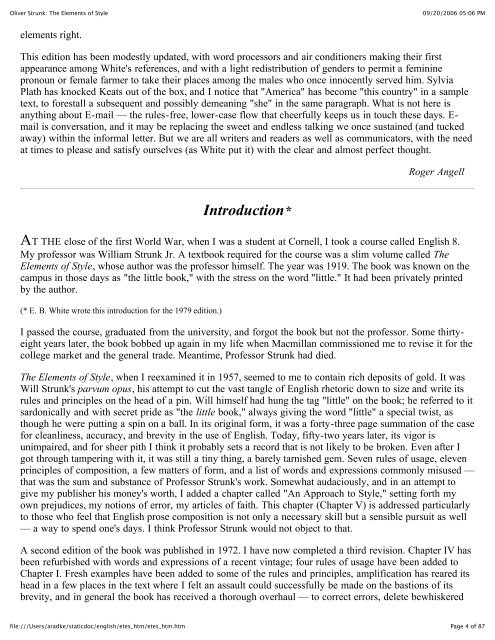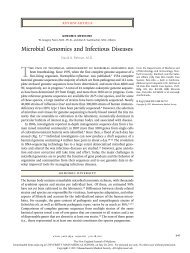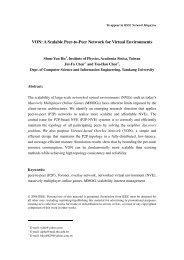Oliver Strunk: The Elements of Style - Evernote
Oliver Strunk: The Elements of Style - Evernote
Oliver Strunk: The Elements of Style - Evernote
Create successful ePaper yourself
Turn your PDF publications into a flip-book with our unique Google optimized e-Paper software.
<strong>Oliver</strong> <strong>Strunk</strong>: <strong>The</strong> <strong>Elements</strong> <strong>of</strong> <strong>Style</strong><br />
elements right.<br />
file:///Users/aradke/staticdoc/english/etes_htm/etes_htm.htm<br />
09/20/2006 05:06 PM<br />
This edition has been modestly updated, with word processors and air conditioners making their first<br />
appearance among White's references, and with a light redistribution <strong>of</strong> genders to permit a feminine<br />
pronoun or female farmer to take their places among the males who once innocently served him. Sylvia<br />
Plath has knocked Keats out <strong>of</strong> the box, and I notice that "America" has become "this country" in a sample<br />
text, to forestall a subsequent and possibly demeaning "she" in the same paragraph. What is not here is<br />
anything about E-mail — the rules-free, lower-case flow that cheerfully keeps us in touch these days. Email<br />
is conversation, and it may be replacing the sweet and endless talking we once sustained (and tucked<br />
away) within the informal letter. But we are all writers and readers as well as communicators, with the need<br />
at times to please and satisfy ourselves (as White put it) with the clear and almost perfect thought.<br />
Introduction*<br />
Roger Angell<br />
AT THE close <strong>of</strong> the first World War, when I was a student at Cornell, I took a course called English 8.<br />
My pr<strong>of</strong>essor was William <strong>Strunk</strong> Jr. A textbook required for the course was a slim volume called <strong>The</strong><br />
<strong>Elements</strong> <strong>of</strong> <strong>Style</strong>, whose author was the pr<strong>of</strong>essor himself. <strong>The</strong> year was 1919. <strong>The</strong> book was known on the<br />
campus in those days as "the little book," with the stress on the word "little." It had been privately printed<br />
by the author.<br />
(* E. B. White wrote this introduction for the 1979 edition.)<br />
I passed the course, graduated from the university, and forgot the book but not the pr<strong>of</strong>essor. Some thirtyeight<br />
years later, the book bobbed up again in my life when Macmillan commissioned me to revise it for the<br />
college market and the general trade. Meantime, Pr<strong>of</strong>essor <strong>Strunk</strong> had died.<br />
<strong>The</strong> <strong>Elements</strong> <strong>of</strong> <strong>Style</strong>, when I reexamined it in 1957, seemed to me to contain rich deposits <strong>of</strong> gold. It was<br />
Will <strong>Strunk</strong>'s parvum opus, his attempt to cut the vast tangle <strong>of</strong> English rhetoric down to size and write its<br />
rules and principles on the head <strong>of</strong> a pin. Will himself had hung the tag "little" on the book; he referred to it<br />
sardonically and with secret pride as "the little book," always giving the word "little" a special twist, as<br />
though he were putting a spin on a ball. In its original form, it was a forty-three page summation <strong>of</strong> the case<br />
for cleanliness, accuracy, and brevity in the use <strong>of</strong> English. Today, fifty-two years later, its vigor is<br />
unimpaired, and for sheer pith I think it probably sets a record that is not likely to be broken. Even after I<br />
got through tampering with it, it was still a tiny thing, a barely tarnished gem. Seven rules <strong>of</strong> usage, eleven<br />
principles <strong>of</strong> composition, a few matters <strong>of</strong> form, and a list <strong>of</strong> words and expressions commonly misused —<br />
that was the sum and substance <strong>of</strong> Pr<strong>of</strong>essor <strong>Strunk</strong>'s work. Somewhat audaciously, and in an attempt to<br />
give my publisher his money's worth, I added a chapter called "An Approach to <strong>Style</strong>," setting forth my<br />
own prejudices, my notions <strong>of</strong> error, my articles <strong>of</strong> faith. This chapter (Chapter V) is addressed particularly<br />
to those who feel that English prose composition is not only a necessary skill but a sensible pursuit as well<br />
— a way to spend one's days. I think Pr<strong>of</strong>essor <strong>Strunk</strong> would not object to that.<br />
A second edition <strong>of</strong> the book was published in 1972. I have now completed a third revision. Chapter IV has<br />
been refurbished with words and expressions <strong>of</strong> a recent vintage; four rules <strong>of</strong> usage have been added to<br />
Chapter I. Fresh examples have been added to some <strong>of</strong> the rules and principles, amplification has reared its<br />
head in a few places in the text where I felt an assault could successfully be made on the bastions <strong>of</strong> its<br />
brevity, and in general the book has received a thorough overhaul — to correct errors, delete bewhiskered<br />
entries, and enliven the argument.<br />
Page 4 <strong>of</strong> 87

















